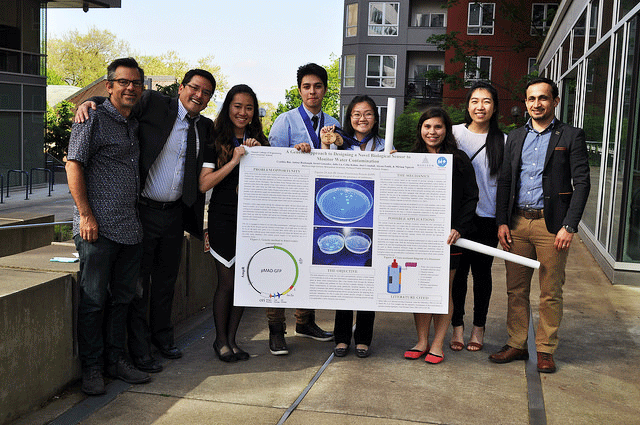Location
Portland State University
Start Date
4-9-2016 12:30 PM
End Date
4-9-2016 2:30 PM
Persistent Identifier
https://archives.pdx.edu/ds/psu/26379
Description
As the global population surges, the demand for fresh water will only increase. With no technological breakthrough on the horizon, it is more important than ever to conserve water and not waste this precious resource. Water conservation is a serious issue, and will only become more severe as global warming worsens. As the global temperature increases, and rainfall becomes more sporadic, it will be important for communities to find new ways to save water. This push has already been made in certain areas in the united states, California, where they were forced to reduce their water consumption by 25%.
Through our fieldwork and other research, we discovered three important factors that would shape our project. The first was all about flow! The flow in a sewage system is integral to its ability to function. If the flow of a sewage system gets too low, you encounter a number of logistical problems. Additionally, if you use too much water, you could adversely affect the ecosystems from which you took the water. Salmon, and their food chain, are affected the most by the overuse of water. When talking with Catherine Howells, we also learned about water conservation. Certain areas in the world, like Perth, Australia, are very good at conserving water, whereas other areas, like Phoenix, Arizona are not.. However, no matter where you are, it is very hard to conserve more than thirty percent of water usage. The average American family of four uses 400 gallons of water per day. On average, approximately 70 percent of that water is used indoors, with the bathroom being the largest consumer. This leaves a large amount of water to be conserve, especially when you consider the average Australian family of the same size uses on 238 gallons of water per day! Also, certain applications use a huge portion of a person’s daily water usage, for instance the toilet and washer equal forty‐eight percent of a household' water consumption, and by learning new ways to reduce this, families could save a lot of water!
Fieldwork Journal
Included in
Engineering Education Commons, Environmental Engineering Commons, Hydraulic Engineering Commons
puddl: Gamifying Water Conservation
Portland State University
As the global population surges, the demand for fresh water will only increase. With no technological breakthrough on the horizon, it is more important than ever to conserve water and not waste this precious resource. Water conservation is a serious issue, and will only become more severe as global warming worsens. As the global temperature increases, and rainfall becomes more sporadic, it will be important for communities to find new ways to save water. This push has already been made in certain areas in the united states, California, where they were forced to reduce their water consumption by 25%.
Through our fieldwork and other research, we discovered three important factors that would shape our project. The first was all about flow! The flow in a sewage system is integral to its ability to function. If the flow of a sewage system gets too low, you encounter a number of logistical problems. Additionally, if you use too much water, you could adversely affect the ecosystems from which you took the water. Salmon, and their food chain, are affected the most by the overuse of water. When talking with Catherine Howells, we also learned about water conservation. Certain areas in the world, like Perth, Australia, are very good at conserving water, whereas other areas, like Phoenix, Arizona are not.. However, no matter where you are, it is very hard to conserve more than thirty percent of water usage. The average American family of four uses 400 gallons of water per day. On average, approximately 70 percent of that water is used indoors, with the bathroom being the largest consumer. This leaves a large amount of water to be conserve, especially when you consider the average Australian family of the same size uses on 238 gallons of water per day! Also, certain applications use a huge portion of a person’s daily water usage, for instance the toilet and washer equal forty‐eight percent of a household' water consumption, and by learning new ways to reduce this, families could save a lot of water!



Comments
Mentors: Christina Jaderholm, Walt Woods
puddl: Gamifying Water Conservation is licensed under the Creative Commons Attribution-NonCommercial 4.0 International License.